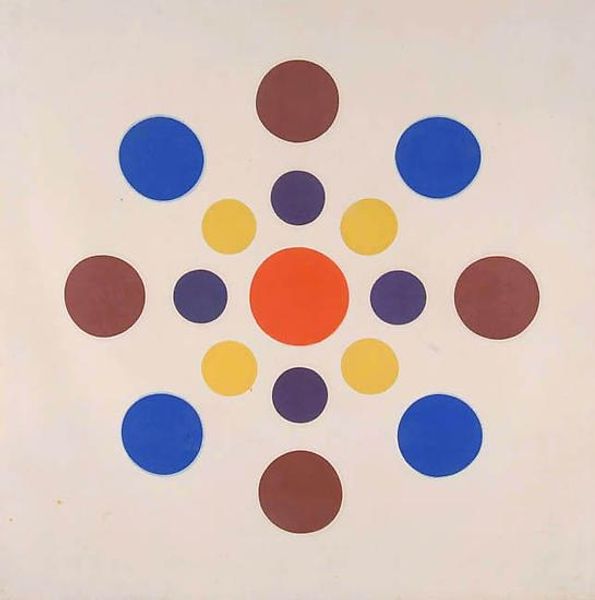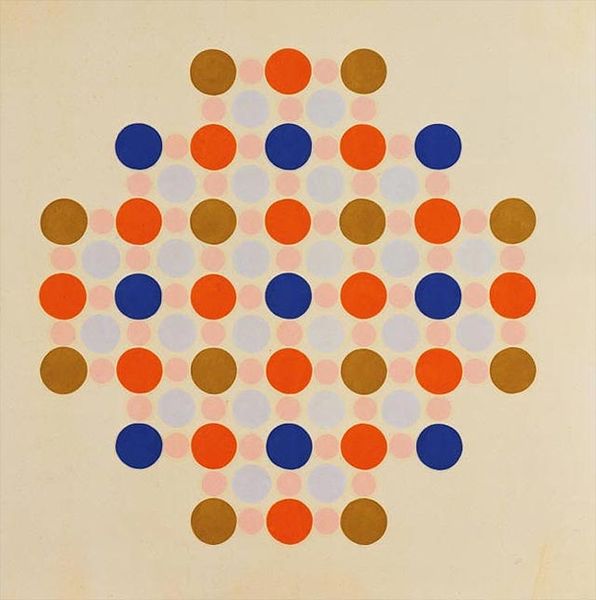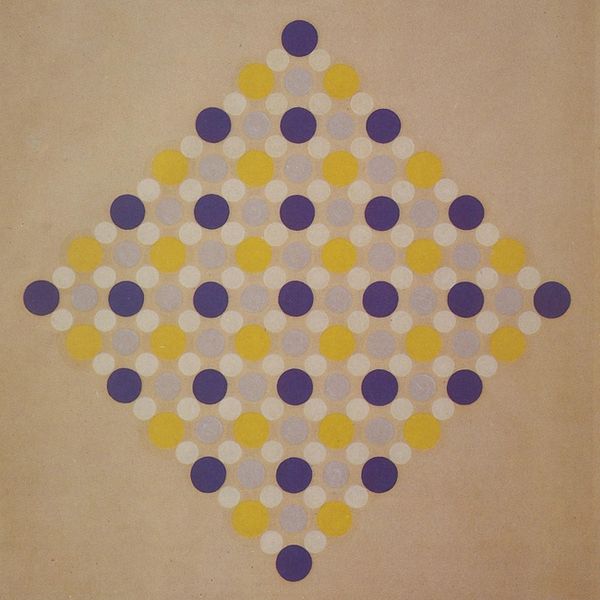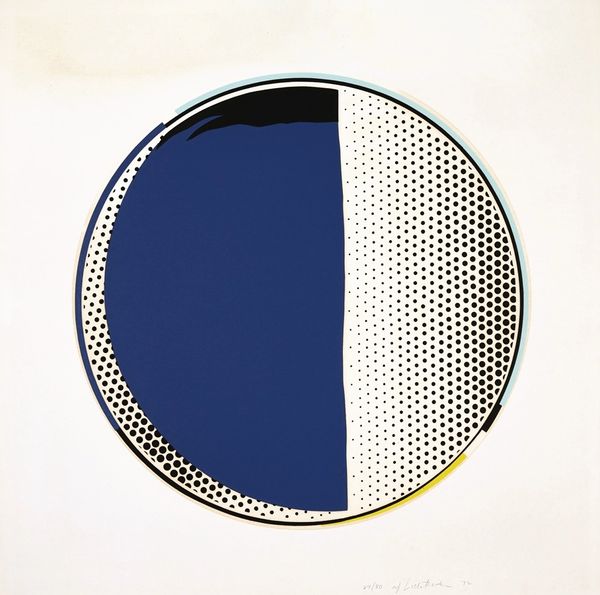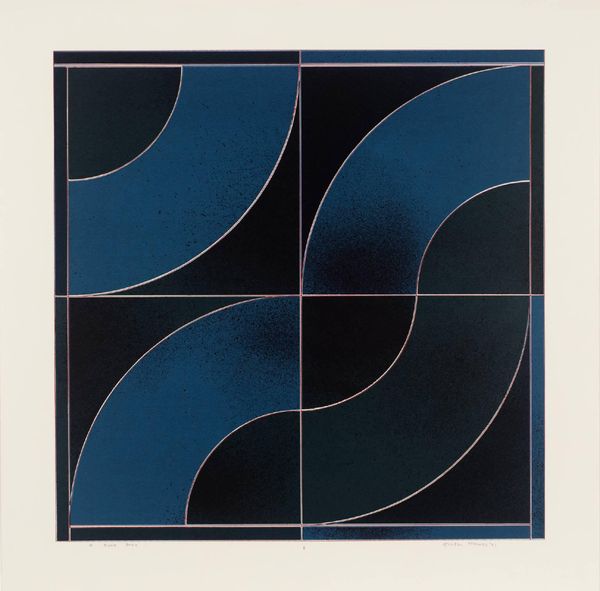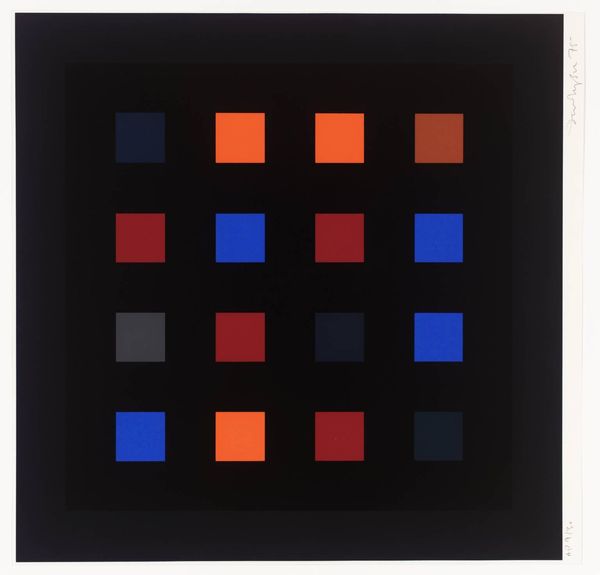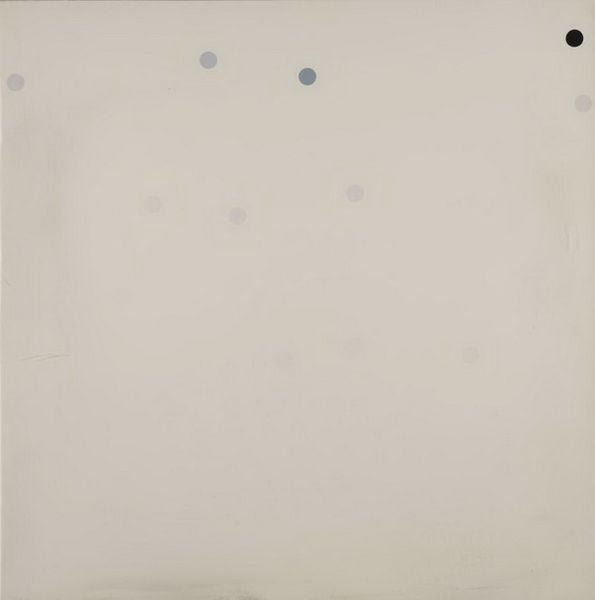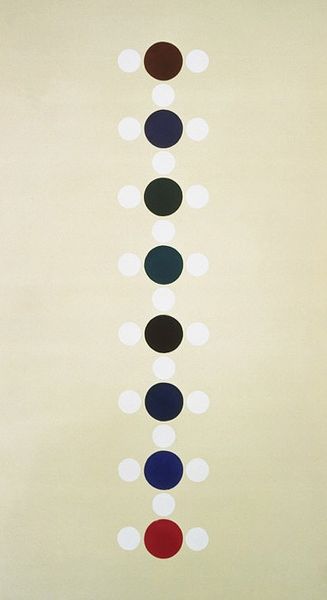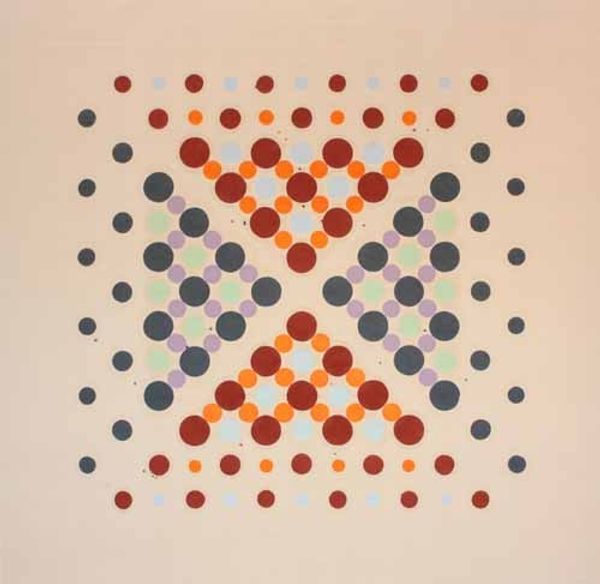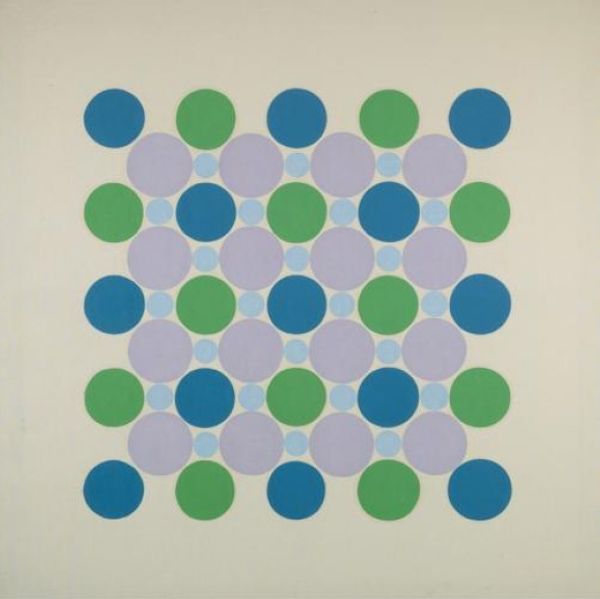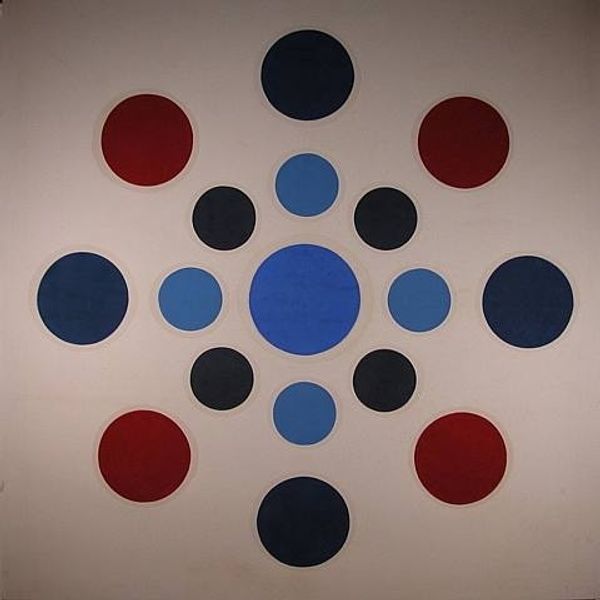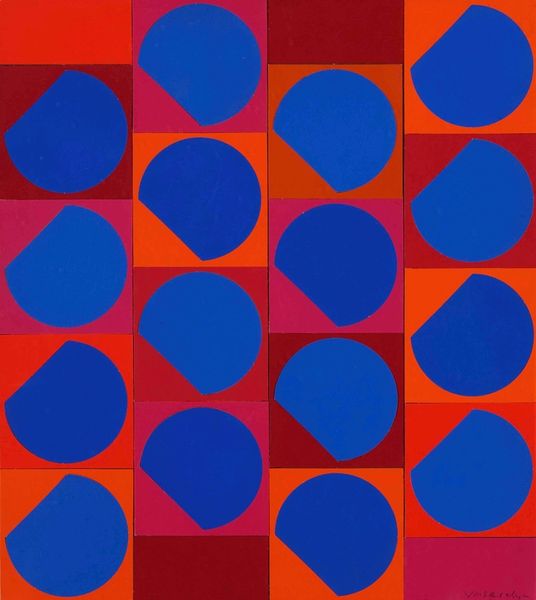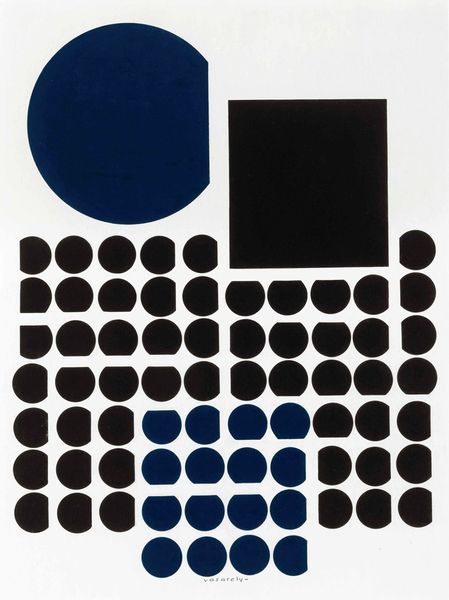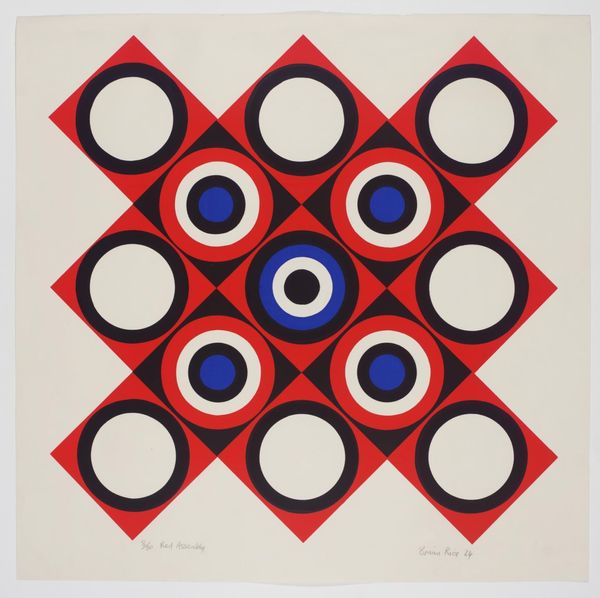
painting
#
abstract-expressionism
#
painting
#
circle
#
pattern
#
colour-field-painting
#
abstract pattern
#
geometric
#
abstraction
#
abstract art
#
modernism
#
hard-edge-painting
Copyright: Thomas Downing,Fair Use
Curator: My first impression is quiet focus. All of those neat circles… What can you tell us about this work? Editor: This is Thomas Downing’s "On Blue", painted in 1963. Downing was working in Washington, D.C. at the time and was associated with the Washington Color School. "On Blue" really exemplifies his exploration of color field painting and hard-edge abstraction. Curator: Well, those meticulously placed circles definitely speak to the hard-edge designation. What fascinates me is how the process contributes to its reception. It's acrylic on canvas; those perfectly delineated edges… He must have used masking techniques. I wonder if he considered the final display of this work. Editor: That’s a crucial point. Color Field painting, especially in the Washington Color School, responded to Clement Greenberg’s formalist ideals but, at the same time, it coincided with broader social and political changes. Institutions in D.C., like the Washington Gallery of Modern Art, were key in promoting this new form of abstraction. And, in terms of process, many of these artists moved away from the loaded brushstrokes of Abstract Expressionism to adopt more industrial methods of applying paint. It’s about flattening the hierarchy of the artist’s hand. Curator: Exactly! It’s about labor and how it’s de-emphasized in the art object itself. It's a manufactured perfection. Editor: Which invites a conversation about accessibility. These artists pushed for art to be more directly engaging, more… democratic. Large-scale, direct color interaction—the intention was to remove barriers between the artwork and the viewer, making it immediate and visceral. Curator: I can see that. The use of pure color creates a very direct optical experience, which emphasizes materials, painting, and, really, commercial production because acrylic paints come off of factory lines. Editor: Absolutely, it challenges this idea of art as something precious and rarefied. These artists were, in their way, democratizing the art world, confronting the power structures and elitism inherent in artistic circles and exhibition spaces. Curator: A fascinating way to understand abstract art's complex relationship with material reality and social change. I leave seeing geometric abstractions in a very different light now. Editor: And I leave contemplating that just because the circles look the same, doesn't mean that they are equal, reflecting the complexities of any artistic milieu and, ultimately, our societies.
Comments
No comments
Be the first to comment and join the conversation on the ultimate creative platform.
